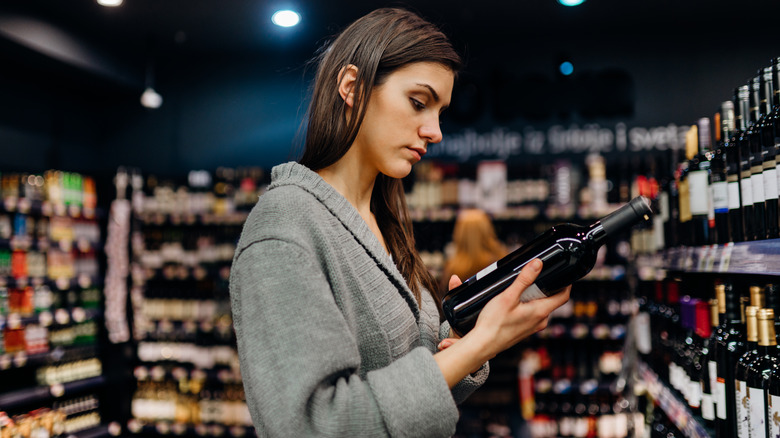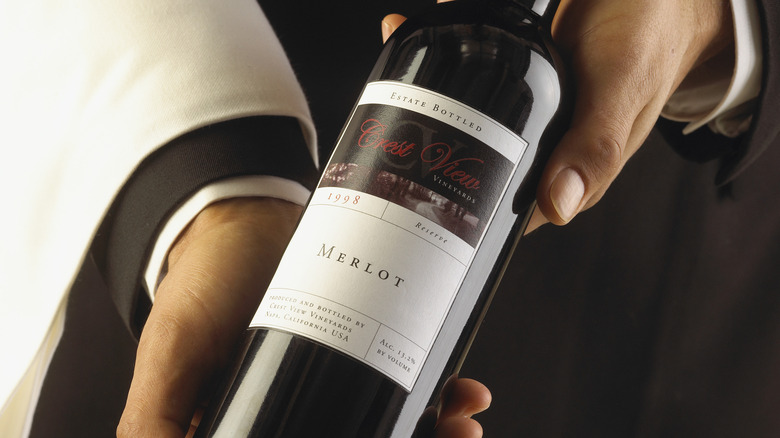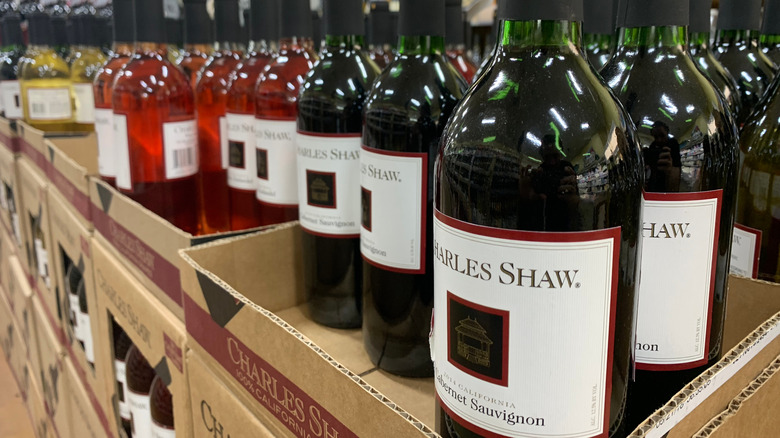The Vintage On Grocery Store Wine Bottles Doesn't Matter. Here's Why
What makes a quality bottle of wine? According to Insider, there are three important factors to consider when evaluating a bottle. Flavor intensity means that the individual components of a wine's flavor profile are all quite clearly defined. Next is complexity, which refers to a greater variety of flavors. The best wines typically contain lots of flavor "notes," such as hints of vanilla or even tobacco. Balance is the last component to consider, which means that no single flavor outshines the others.
While you must actually crack open a bottle to make judgments on intensity, complexity, and balance, other factors are easier to determine. Take a wine's vintage, for instance, which many wine lovers use as verification that a bottle will be a delight on the palate (via Wine Folly). While vintage is an important factor to consider in certain situations, it doesn't always have the significant impact on quality that many people seem to believe.
Understanding vintage dates and what they mean for wine quality
As explained by The Globe and Mail, the vintage date emblazoned on wine bottles conveys the harvest year of the grapes. While this information might not seem so relevant for casual wine enthusiasts, it can tell you a lot about the quality of the vino in the bottle. Growing conditions are key to creating a quality end result. By knowing the vintage date and the location where the grapes were grown, a connoisseur can make a reasonable estimation of the wine's quality. Vintage years that enjoyed prime growing conditions will naturally produce better quality bottles than those beleaguered by frigid temperatures, rainy conditions, and other types of foul weather.
However, vintage matters more in certain regions where the weather is unpredictable. For instance, weather fluctuations are less common in an area like Southern California than they are in the Niagara wine region in Canada (per CBC). Winemakers also have greater access to essential resources and techniques that can offset some of the mayhem caused by poor weather during a growing season. Additionally, there are many other factors that can play a role in the overall quality of a bottle, especially when picking one up at a grocery store.
How proper storage can affect the quality of wine
These days, many grocery stores around the country feature bottles of wine to entice shoppers. Some stores, such as Trader Joe's, even offer their own private label varieties, such as the chain's iconic Two Buck Chuck. Reader's Digest notes that this Charles Shaw-produced wine remains wildly popular years after its 2002 release, with a whopping 800 million bottles sold over a 12-year period.
While you can't beat the convenience of grocery store wine, the quality may leave a little bit to be desired, regardless of vintage dates. Danby, an appliance manufacturer, explains that temperature and humidity control are a must when it comes to wine storage. General recommendations call for wine to be stored at temperatures around 56 degrees Fahrenheit for maximum quality. Warmer temperatures cause wines to age rapidly, which can lead to an unpleasant taste. As for humidity, levels lower than 70% to 80% will cause the cork to shrink and allow air into the bottle. Grocery stores are less capable of maintaining ideal conditions for wine, as they may lack the tools and resources to do so. As a result, a bottle produced during a year with optimal growing conditions can still lack quality due to storage snafus.


